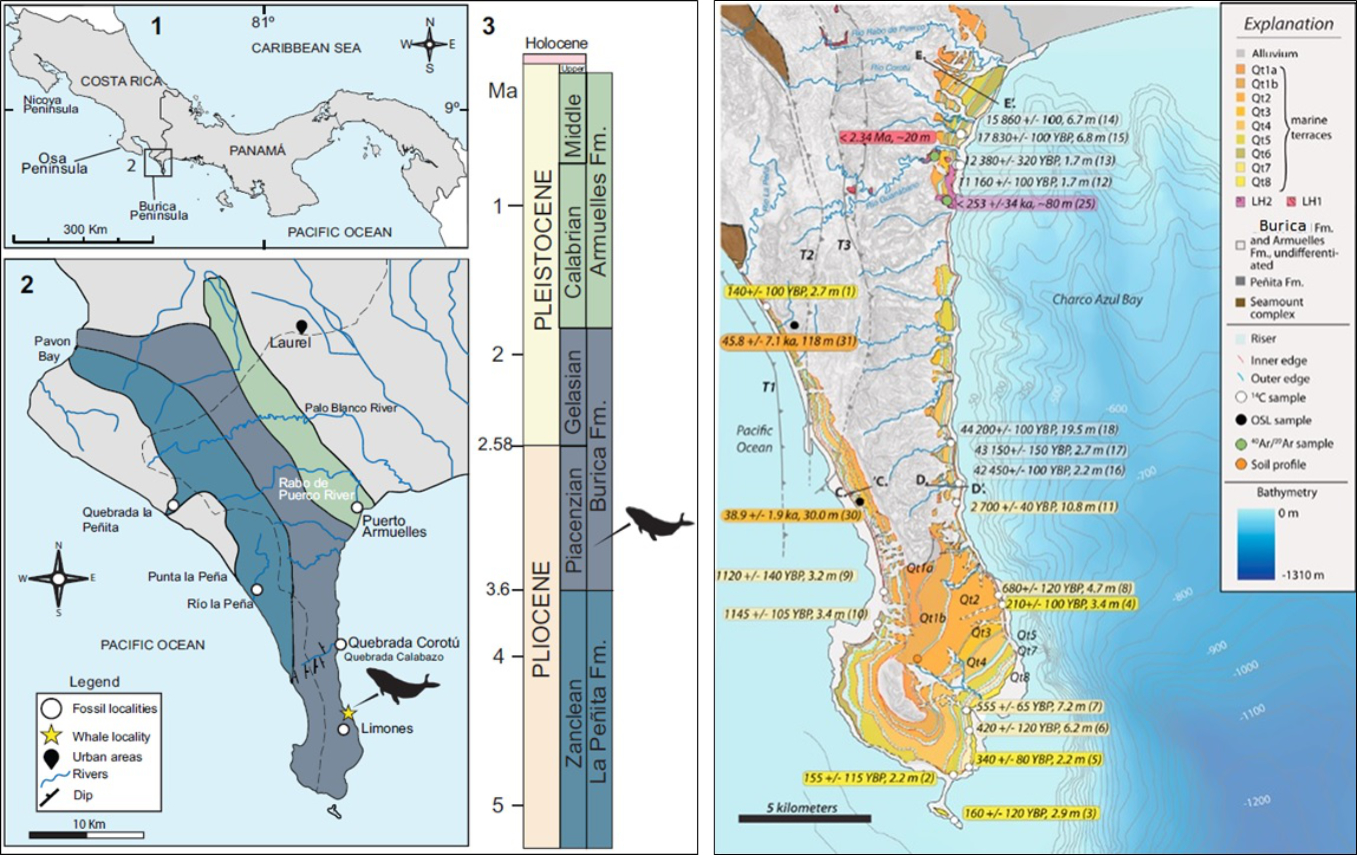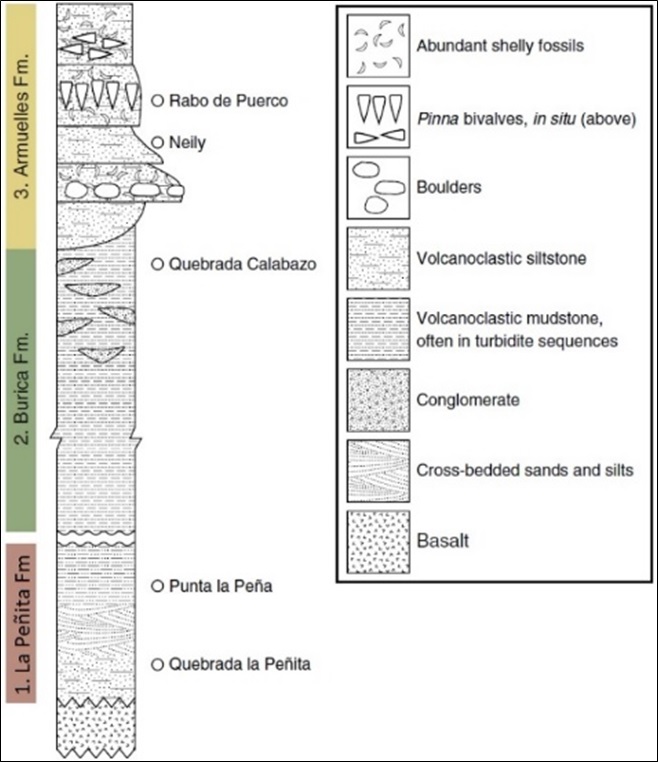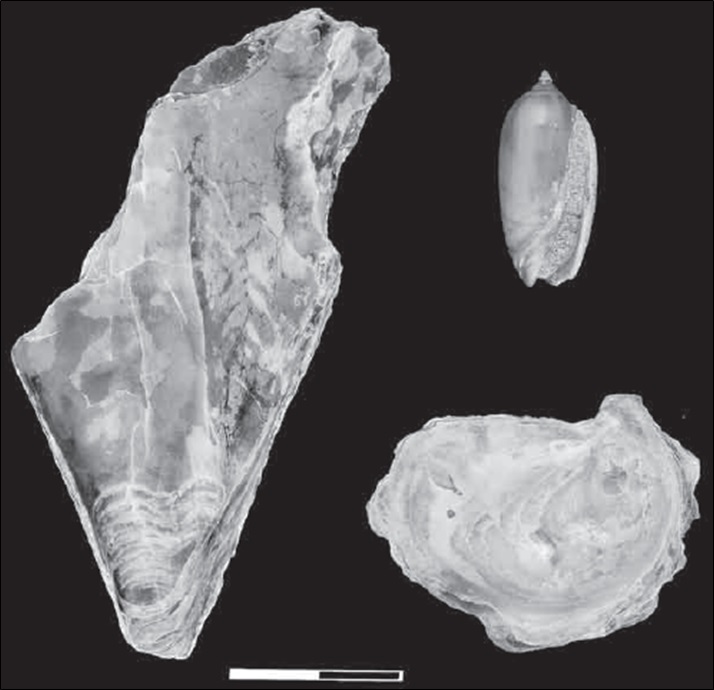Armuelles Fm
Type Locality and Naming
Burica Peninsula (Figure 046, Figure 047)
[Figure 1. Geological map of the Burica Peninsula showing the location of a Pliocene fossil whale found in the Burica Fm (Cortés et al. (2019)). Note also the dash line delineating the border between Costa Rica and Panama Right - Geologic and geomorphic map of the ESE Burica Peninsula draped on slope map and displaying the Quaternary marine terraces. LH1 and LH2 correspond to the lahar sequences described below. Also, Qt1 to Qt8 represent the Monte Verde Fm. Modified from Morell et al. (2011)]
Synonym: Armuelles Member; See “Charco Azul Gr” for some additional comments on synonymy.
Lithology and Thickness
Thickness: ~370 to 500. Morell et al. (2011) ; Cortés et al. (2019)
[Figure 2. Stratigraphic section with location of fossil sites. Modified from O'Dea et al. (2012)]
Relationships and Distribution
Lower contact
Upper contact
Regional extent
GeoJSON
Fossils
[Figure 3: Representative fossils of the Armuelles Fm. Part of a valve from Pinna (left). Gastropod from the genus Oliva (family Olividae) (top right). Ostra (bottom right). All of them are locally abundant. Scale = 2cm. O'Dea et al. (2007).]
Age
Depositional setting
Additional Information
References:
- Olsson (1942a).
- Coryell et al. (1942);
- Woodring (1960). The name was used in a brief description of the geology of the Burica Peninsula, southwestern Panama. The Armuelles Fm, made up principally of foraminiferal siltstone and sandstone, crops out on the Burica Peninsula southward from Puerto Armuelles. It has a maximum thickness of about 4,000 feet and unconformably overlies the Pliocene Charco Azul Fm. The molluscan fauna represents a shallow-water assemblage. The mollusks, nearly all of which are Recent species, have been listed by Olsson (1942a, pp. 9-12) and some species were described in the same publication. The high percentage of Recent species indicates that the age is not older than early Pleistocene.
- Obando (1986); Jung (1989)
- Corrigan et al. (1990), originally named the “Charco Azul Gr” as the “Charco Azul Fm” and included in it its three Members “Peñita”, “Burica” and “Armuelles”. It is only later that it was renamed as a Group, while each of its members were given the designation of “Formation”.
- Kolarsky (1992); Coates et al. (1992); Collins et al. (1995) ; Kolarsky et al. (1995a, 1995b); Schlegel (1996); Lattig et al. (2000); Todd & Collins (2005) ; O’Dea et al. (2007) ; Beu (2010); Morell et al. (2011) ; Landau et al. (2012c); Okamura et al. (2013); Cortés et al. (2019).


